






ABL® Calming Cart
The ABL® Calming Cart provides schools with a flexible, portable solution to integrate Action Based Learning® strategies while supporting student self-regulation and emotional wellness. Designed for elementary classrooms (K–5), this mobile cart equips educators with over 35 tools, 10+ stations, and 120+ activities to help students reset, focus, and prepare their brains for learning.
Purpose and Benefits
The Calming Cart is designed to help students manage emotions, reduce stress, and regain focus. Students learn to recognize which tools work best for them and when to use them, promoting self-awareness, mindfulness, and independent regulation. The cart can be used individually, in small groups, or as a whole-class activity, creating a structured yet flexible system for purposeful movement and emotional support.
How It Works
-
Set up up to 10 stations using the included cones, and place the corresponding station cards at the tip of each cone.
-
Model expectations and proper use of each activity for students.
-
Rotate students through stations using the included timers, adjusting duration based on the number of stations and group size.
-
Activities can be used in classrooms, hallways, or common areas to provide quick, purposeful movement breaks that prepare the brain to learn.
-
Additional wall mounts allow for a consistent setup and easy access to equipment in various locations.
Included Equipment and Tools
-
2 Boomerboards
-
2 Balance Boards
-
Balance Rope
-
5 Sensory Seat Cushions
-
Turtle Shell
-
Standing Eye Tracker
-
Handheld Eye Tracker
-
Learning Ladder and Cards
-
2 Stability Fitness Balls
-
Padded Scooter Board
-
10 Assorted Cones
-
9 Juggling Scarves
-
Ribbon Wands
-
Tactile Domes
-
Raindrop Body Sock
-
Peacewalk Mat
-
Activity Card Sets, Station Cards, and Product Guide
-
And more
Who Benefits
The Calming Cart is ideal for classrooms with or without a dedicated ABL® Lab. It supports students of varying abilities and grade levels, allowing all learners to practice the 12 Foundations of Learning Readiness® while promoting focus, self-regulation, and emotional balance.
The Importance of Purposeful Movement
Research shows a direct link between physical activity and brain function. Purposeful movement strengthens neural connections, improves memory, reading, writing, and problem-solving, and enhances overall learning efficiency.
12 Foundations of Learning Readiness®
The activities on the Calming Cart help students develop critical skills in the following areas:
-
Crossing the Midline – Cross Lateralization
-
Body in Space – Vestibular/Proprioception
-
Balance – Spatial Orientation
-
Visual Development – Encoding Symbols
-
Rhythm – Beat Awareness and Beat Competency
-
Tactile Learning – Sensory Motor and Fine Motor Skills
-
Motor Skills – Locomotor and Nonlocomotor Skills
-
Eye/Hand/Eye/Foot Coordination – Manipulative Skills
-
Physical Fitness – Strength and Flexibility
-
Cardiovascular Fitness – Aerobic Activity
-
Problem Solving – Embodied Cognition
-
Self-Management – Mindfulness and Self-Awareness
The ABL® Calming Cart is more than a piece of equipment—it is a comprehensive, mobile classroom solution that encourages purposeful movement, emotional regulation, and active learning for elementary students.





































